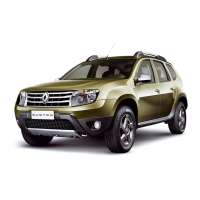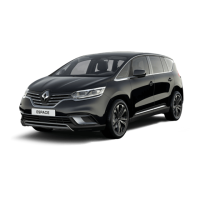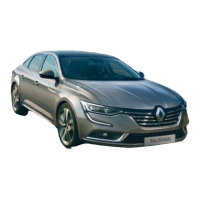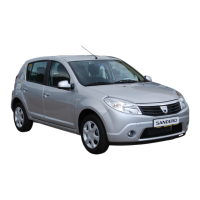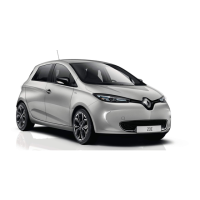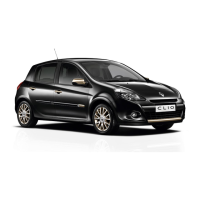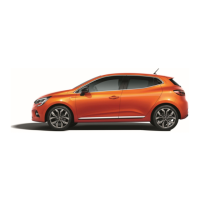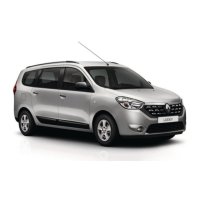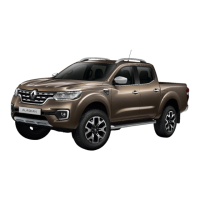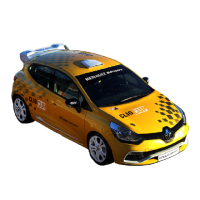air conditioning .....................................(up to the end of the DU)
heating and air conditioning system .....(up to the end of the DU)
heating system .....................................(up to the end of the DU)
air conditioning .....................................(up to the end of the DU)
ventilation .............................................(up to the end of the DU)
temperature regulation .........................(up to the end of the DU)
HEATING, VENTILATION, AIR CONDITIONING (1/2)
Air conditioning controls
(depending on vehicle)
Button B switches the air conditioning
on or off.
The system cannot be switched on if
control C is set to 0.
Using the air conditioning system ena-
bles you to:
– lower the internal passenger com-
partment temperature, especially in
hot weather, when driving in traffic or
when the vehicle has been parked in
the sun;
– reduce the humidity of the air blown
into the passenger compartment (re-
moval of condensation).
Fuel consumption increases when the
air conditioning system is being used
(switch it off when it is not required).
Note: The air conditioning may be used
in all conditions but does not operate
when the external temperature is low.
– Button B not activated (warning
light off).
The air conditioning is not operating.
The heating and ventilation controls
are the same as a vehicle without air
conditioning.
– Button B activated (warning light
on).
The air conditioning is operating.
CB

